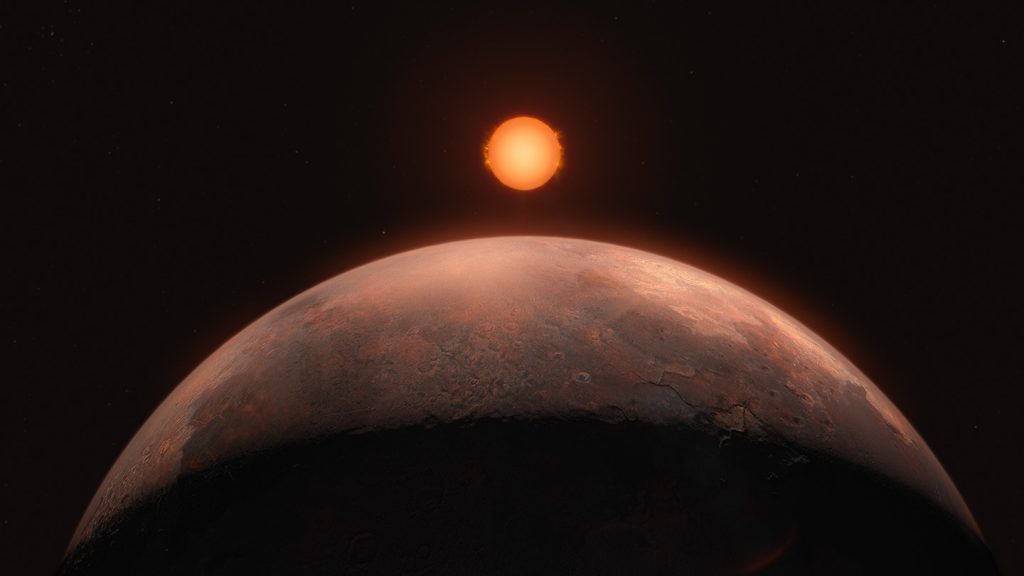A recent study suggests that Barnard’s star, a red dwarf star located just six light-years away from our solar system, may have at least one, and possibly multiple, small rocky planets orbiting it. This star, which is about one-sixth the mass of the sun, is the closest individual star to our solar system, with only the stars in the Alpha Centauri system being closer. Barnard’s star has been a target of astronomers for years due to its proximity to Earth and the potential for discovering exoplanets around it.
Researchers led by Jonay González Hernández from the Instituto de Astrofísica de Canarias in Tenerife, Spain, conducted a study where they analyzed over 150 observations from a telescope in South America over a period of four years. They were specifically looking for wobbles in the star’s motion that would indicate the presence of orbiting planets gravitationally affecting it. The strongest wobble observed occurred every 3.15 days, suggesting the presence of a small rocky planet roughly three times the mass of Mars in a near-circular orbit around the star.
The team has done a thorough job of ruling out other possible sources of the observed wobble, such as star rotation or telescope movement during observations. Astronomer Jennifer Burt of NASA’s Jet Propulsion Laboratory commended the precision of the instruments used and the efforts to eliminate potential errors, stating that this discovery is likely to be trusted by the scientific community. This finding could inspire other research teams to re-examine past observations of Barnard’s star and potentially lead to more discoveries.
In addition to the main wobble observed, the study also hints at the existence of smaller oscillations on top of the larger wobble. While these are yet to be confirmed, the researchers believe they represent the presence of three smaller planets orbiting the star at periods of 2.34 days, 4.12 days, and 6.74 days. Even though all four of these planets are situated too close to Barnard’s star to sustain life as we know it, the study suggests that there may be more discoveries waiting to be made around this nearby star. With advancements in technology and continued research efforts, more exoplanets and potentially habitable worlds could be found in the future.


